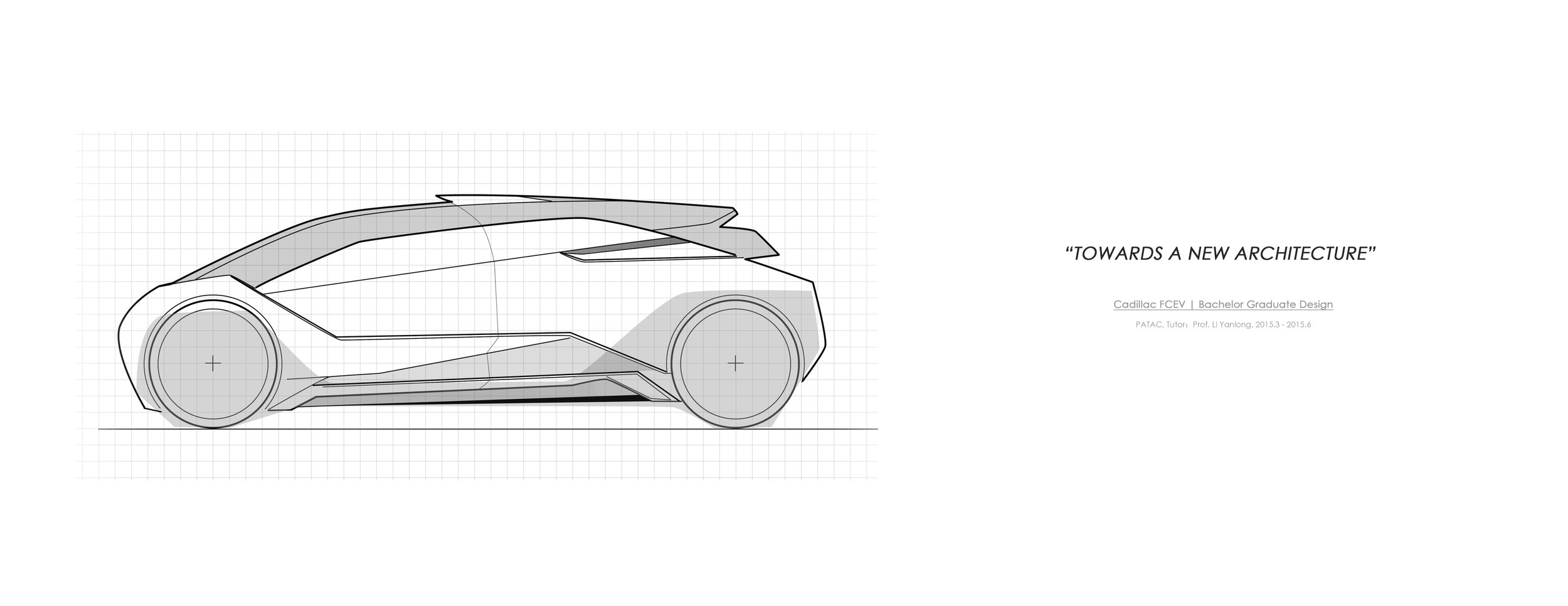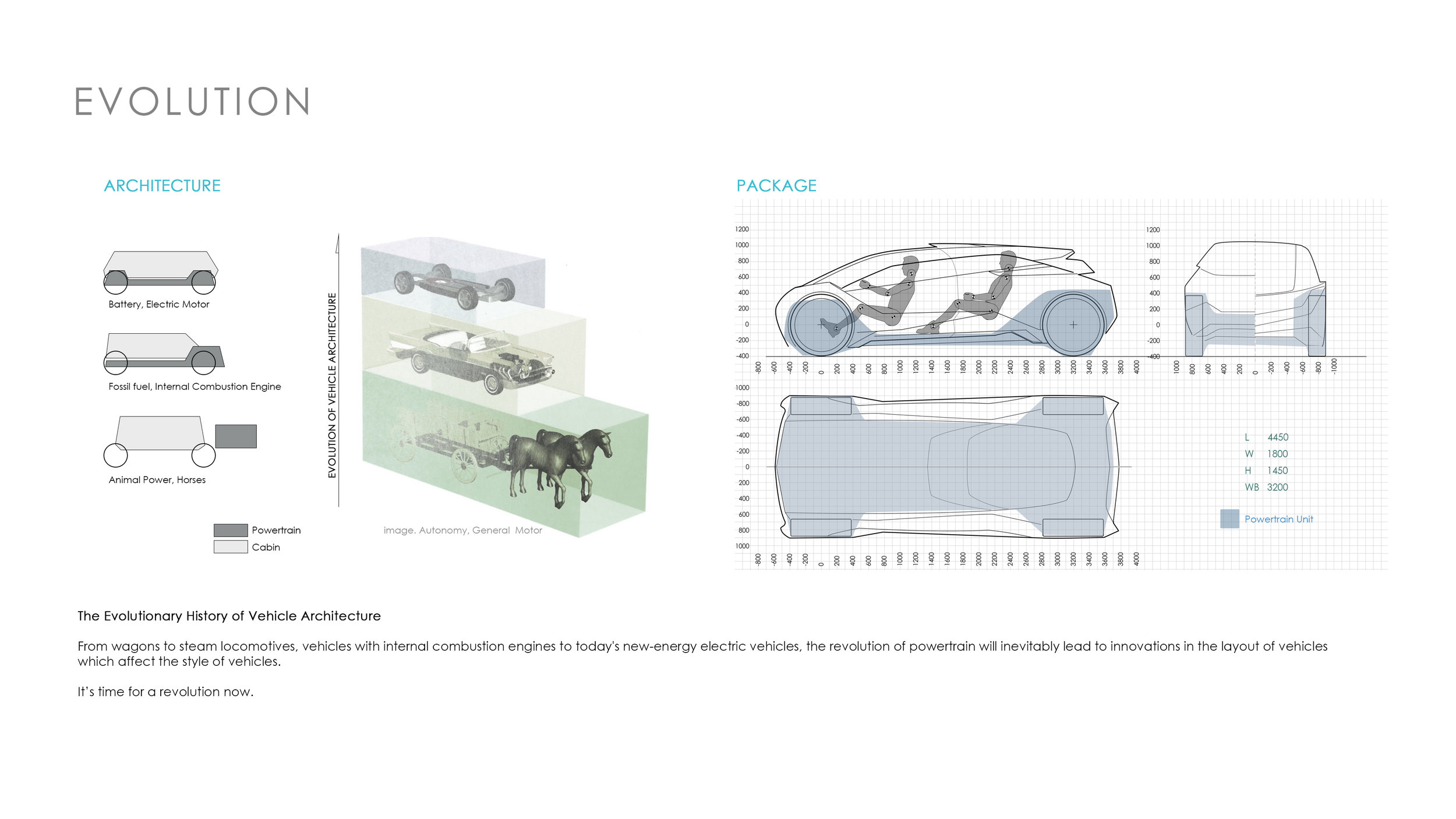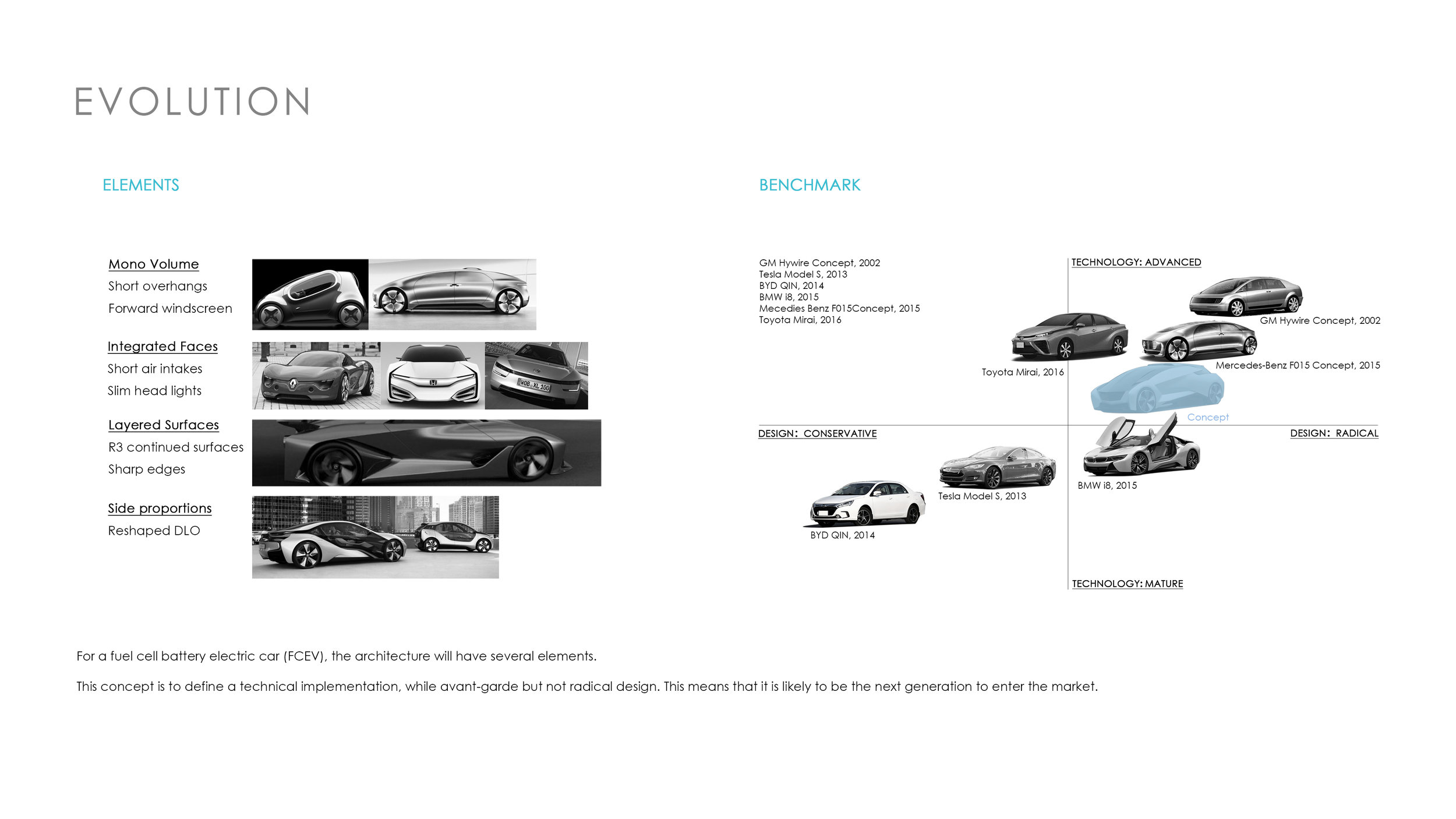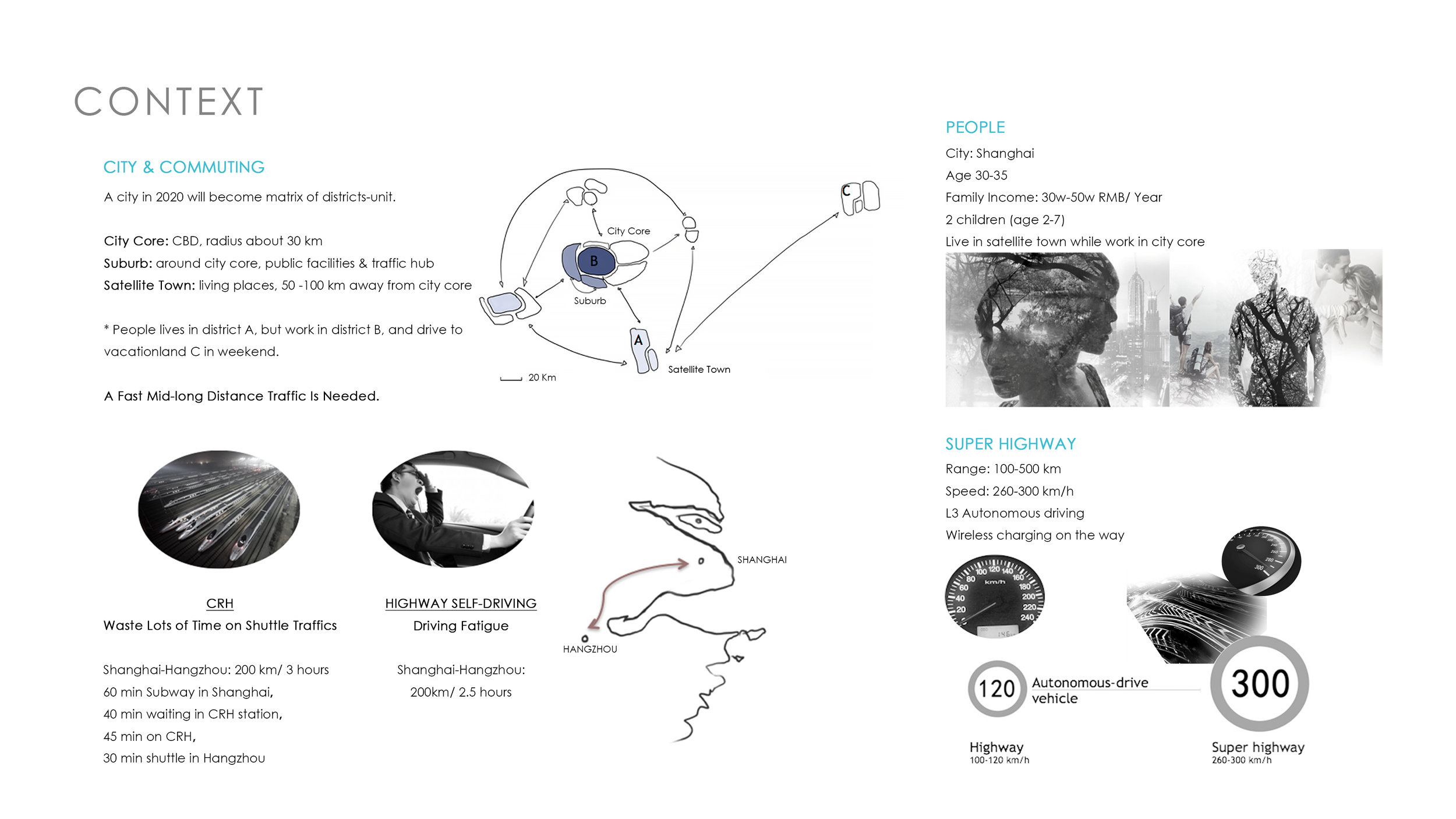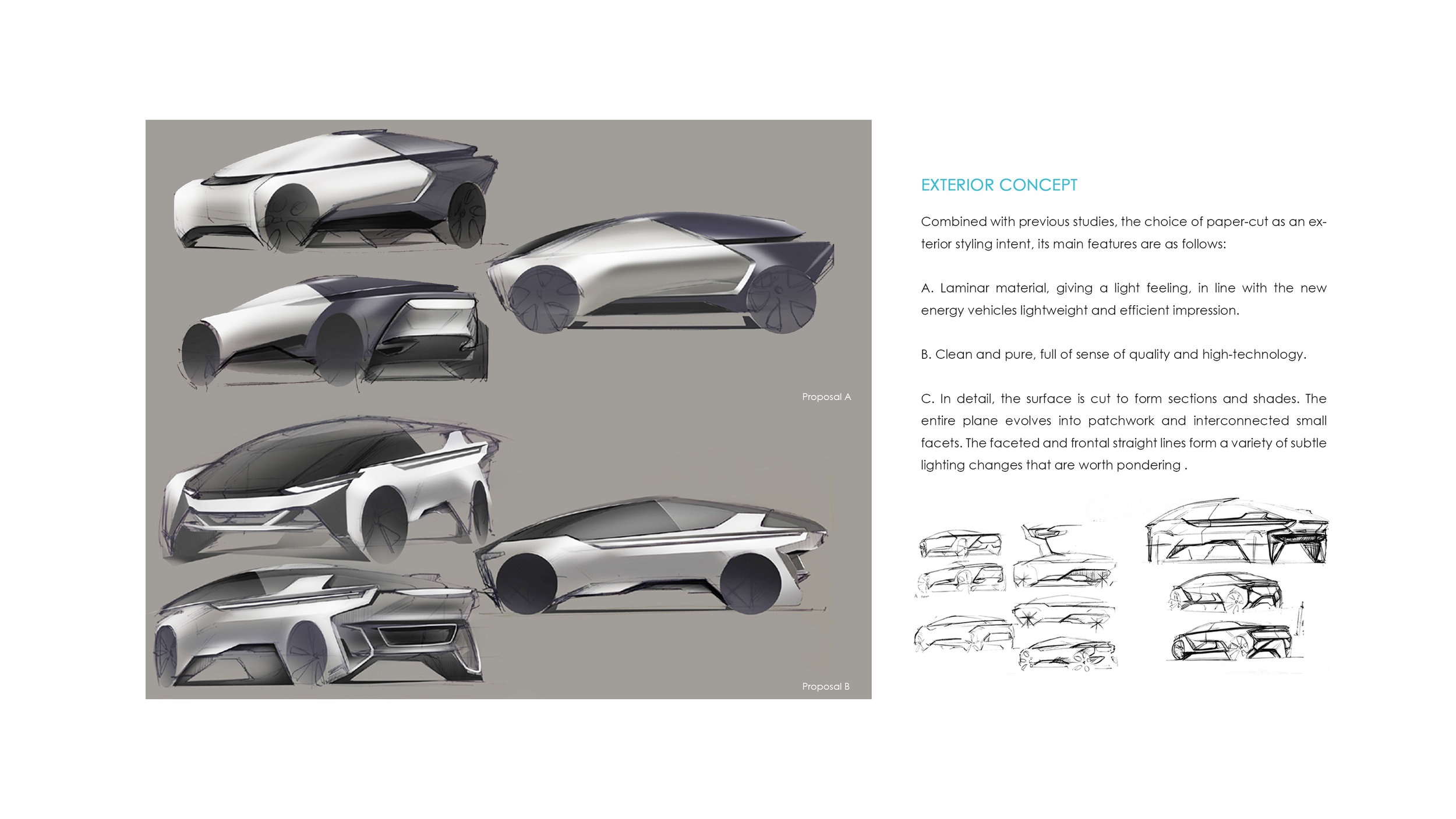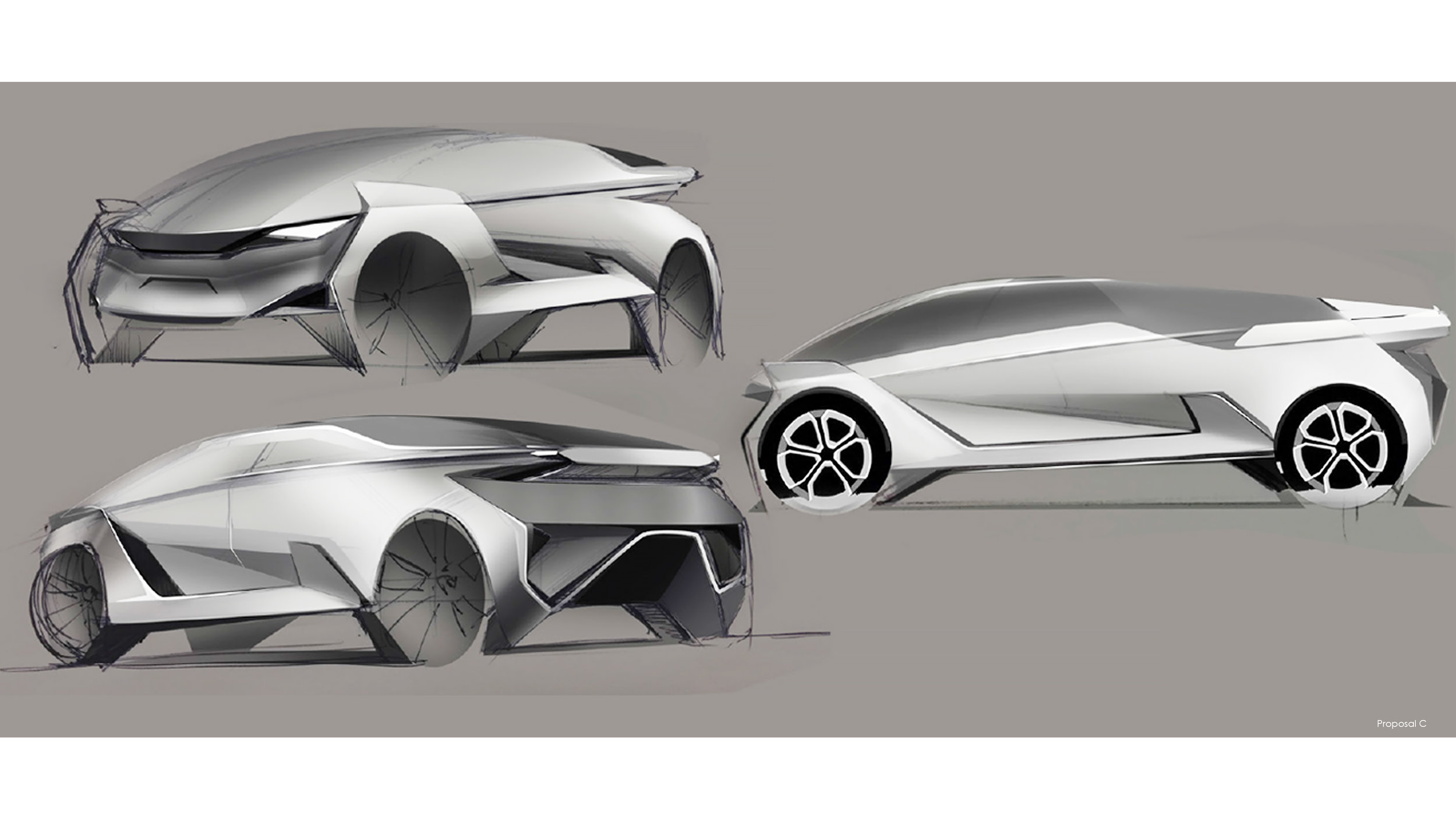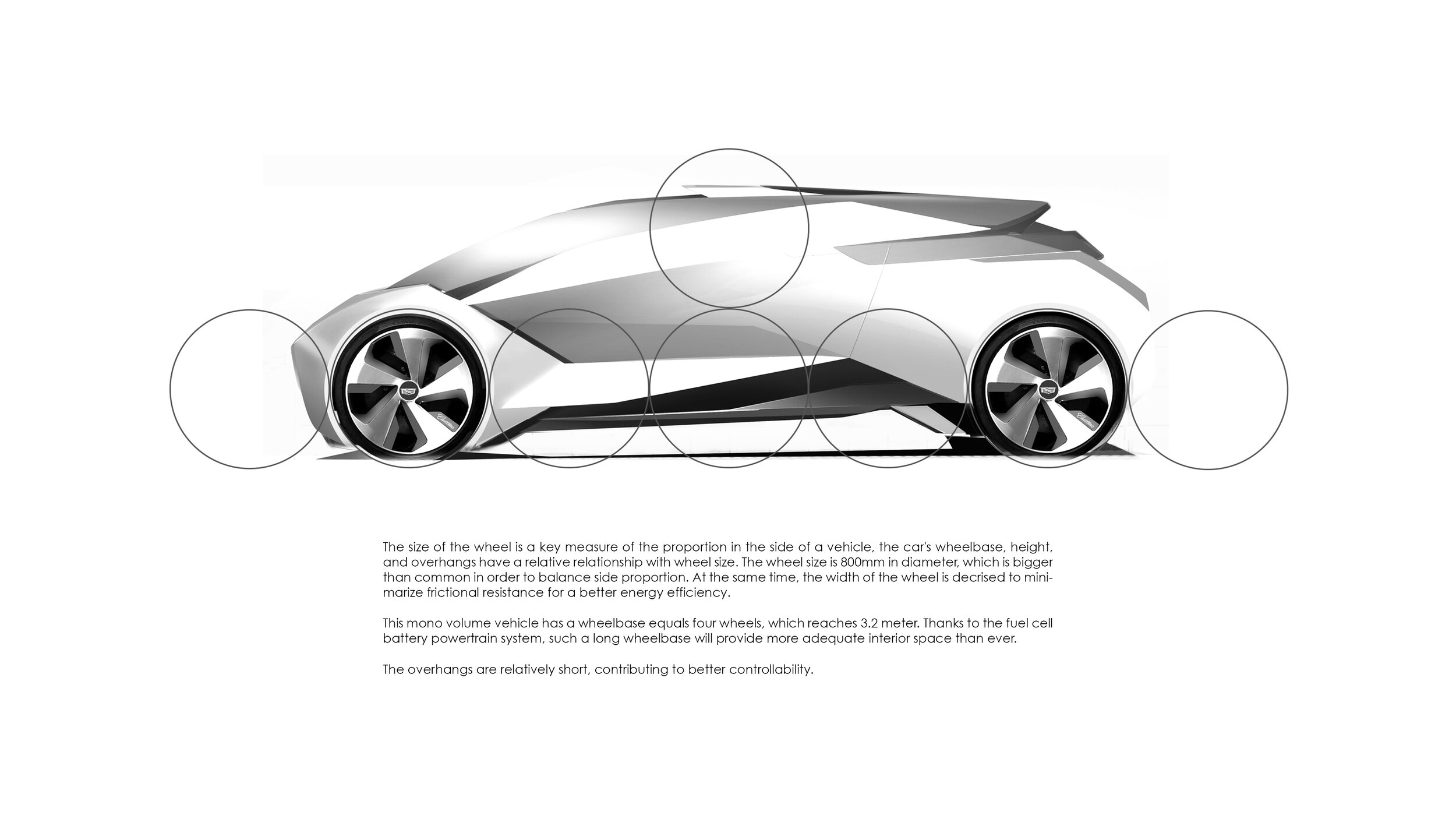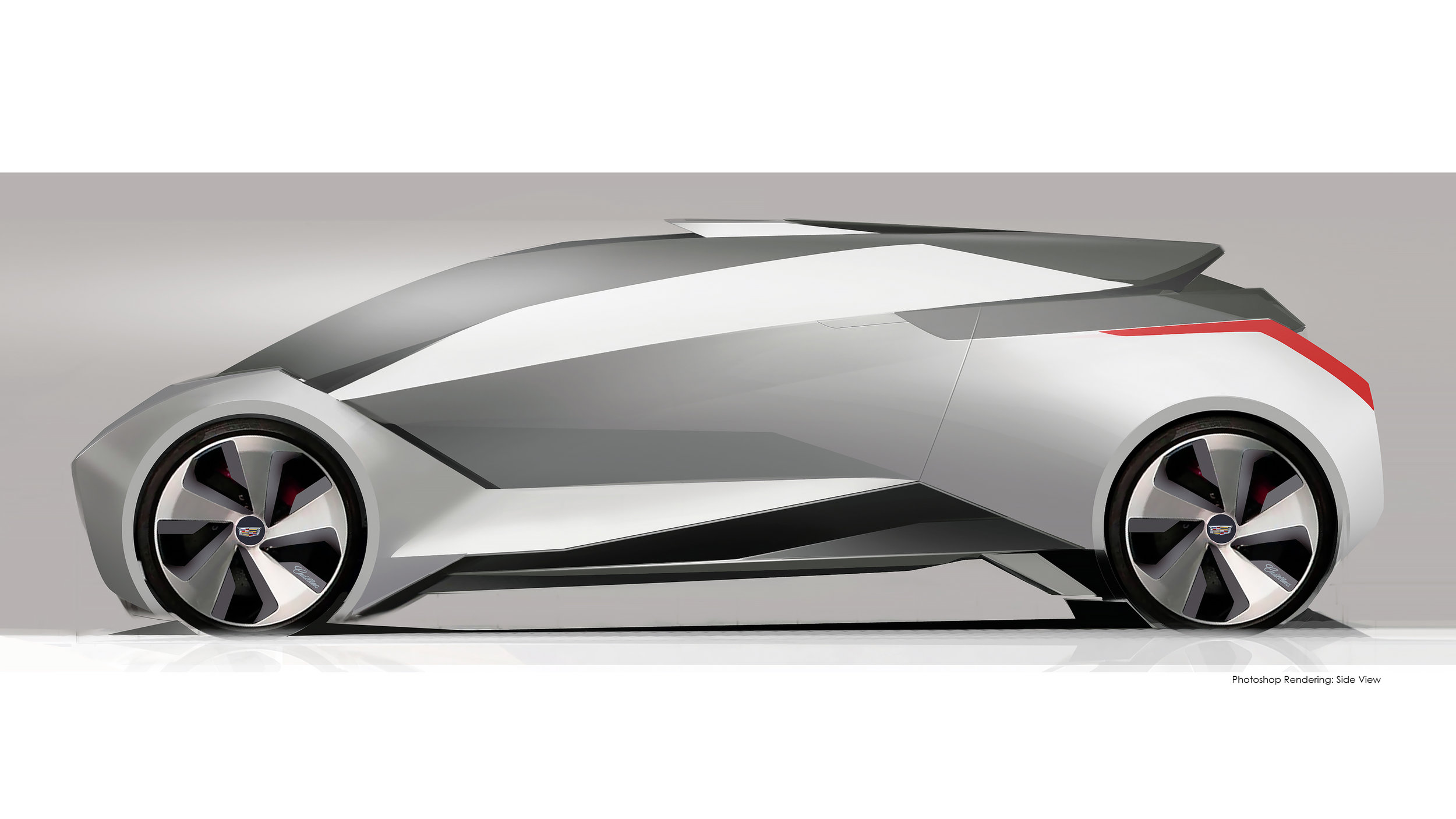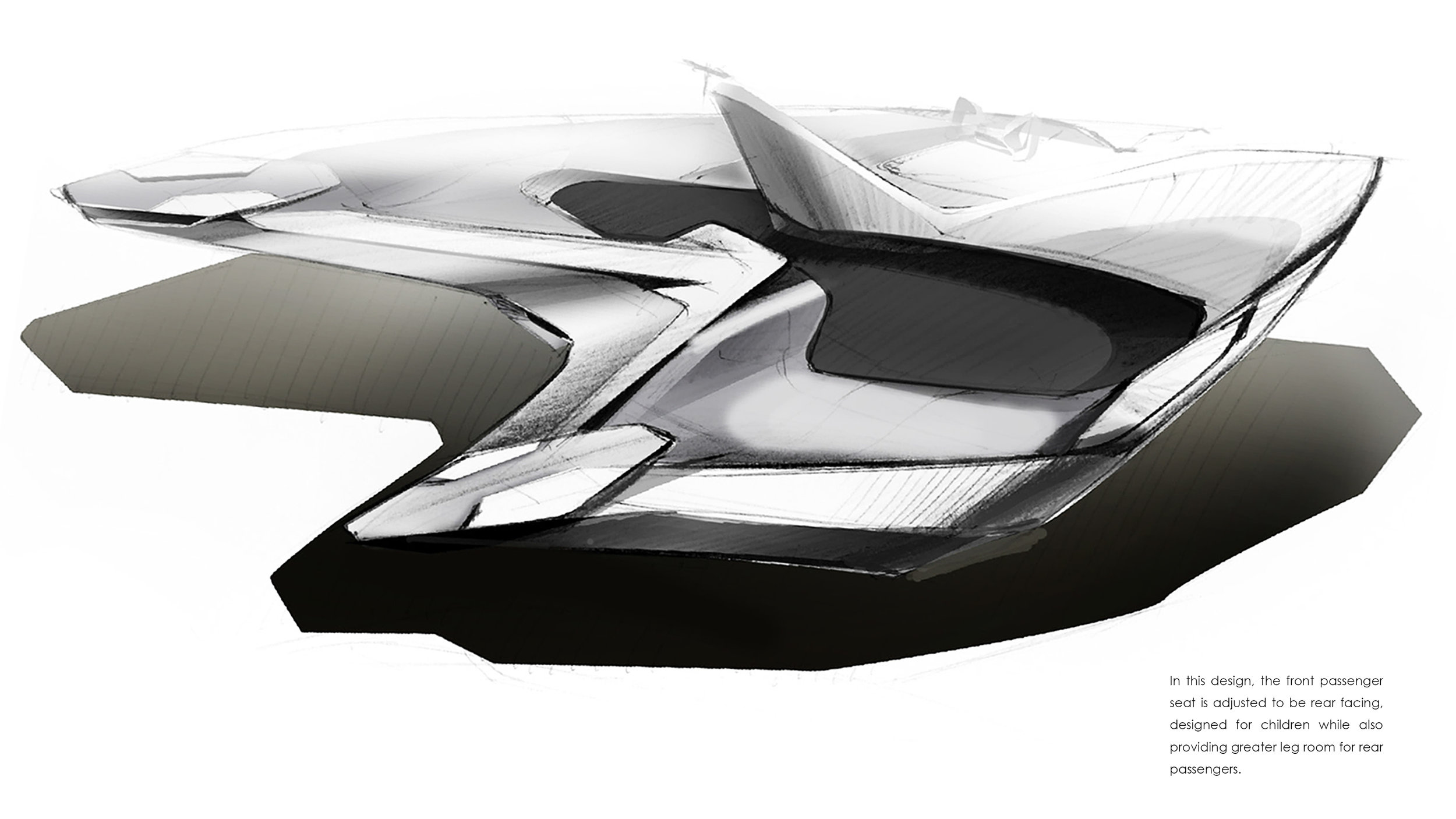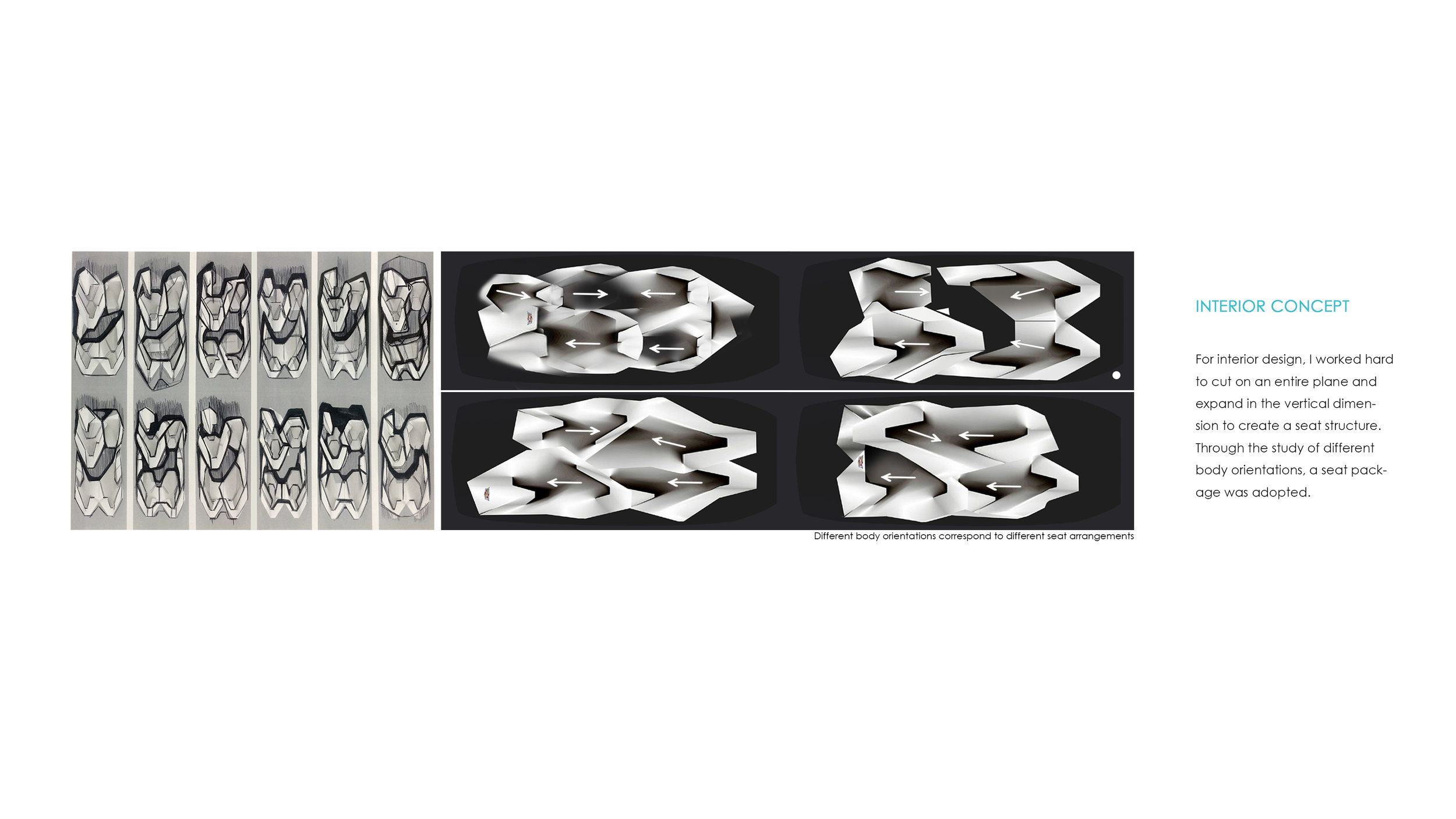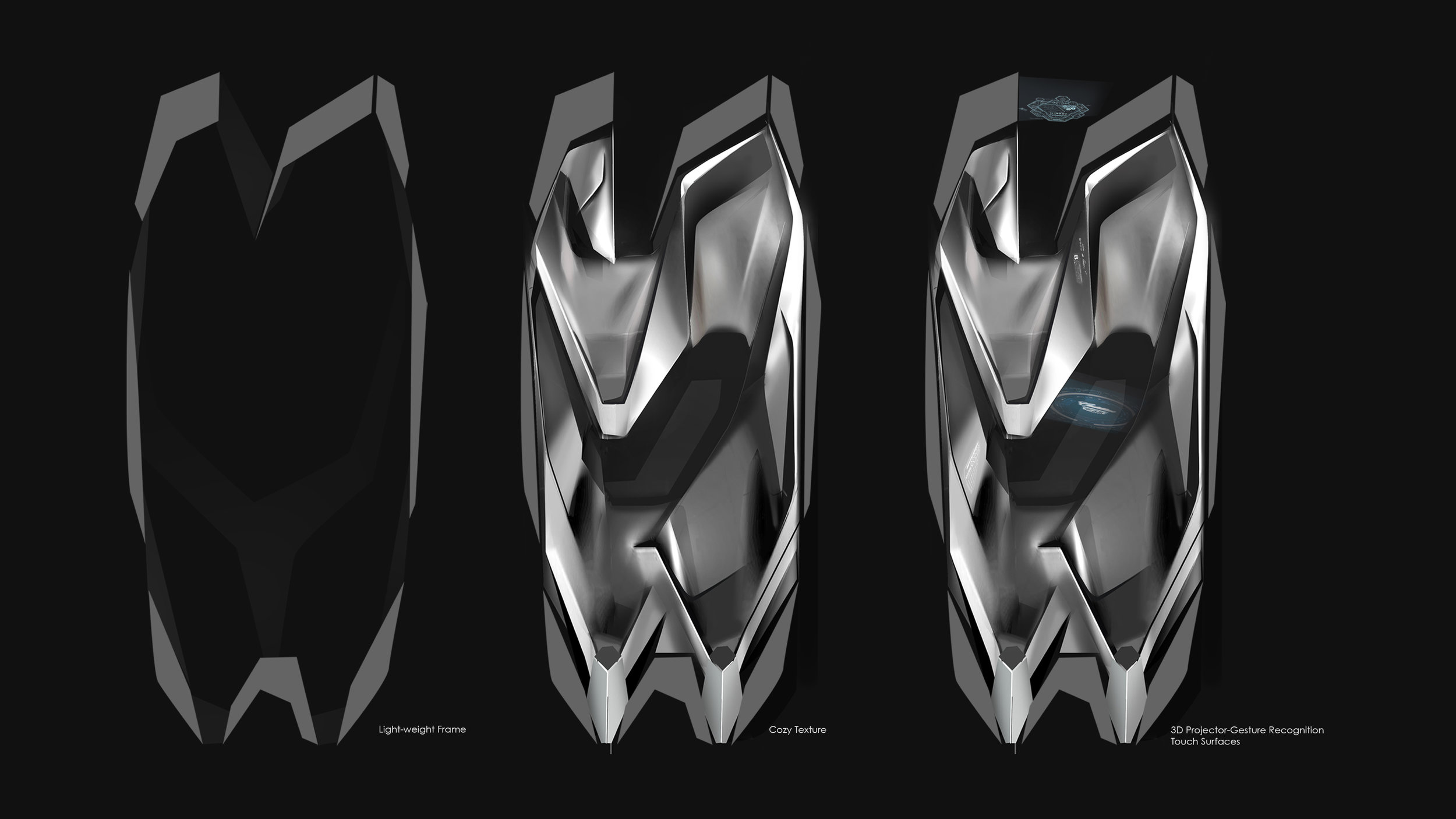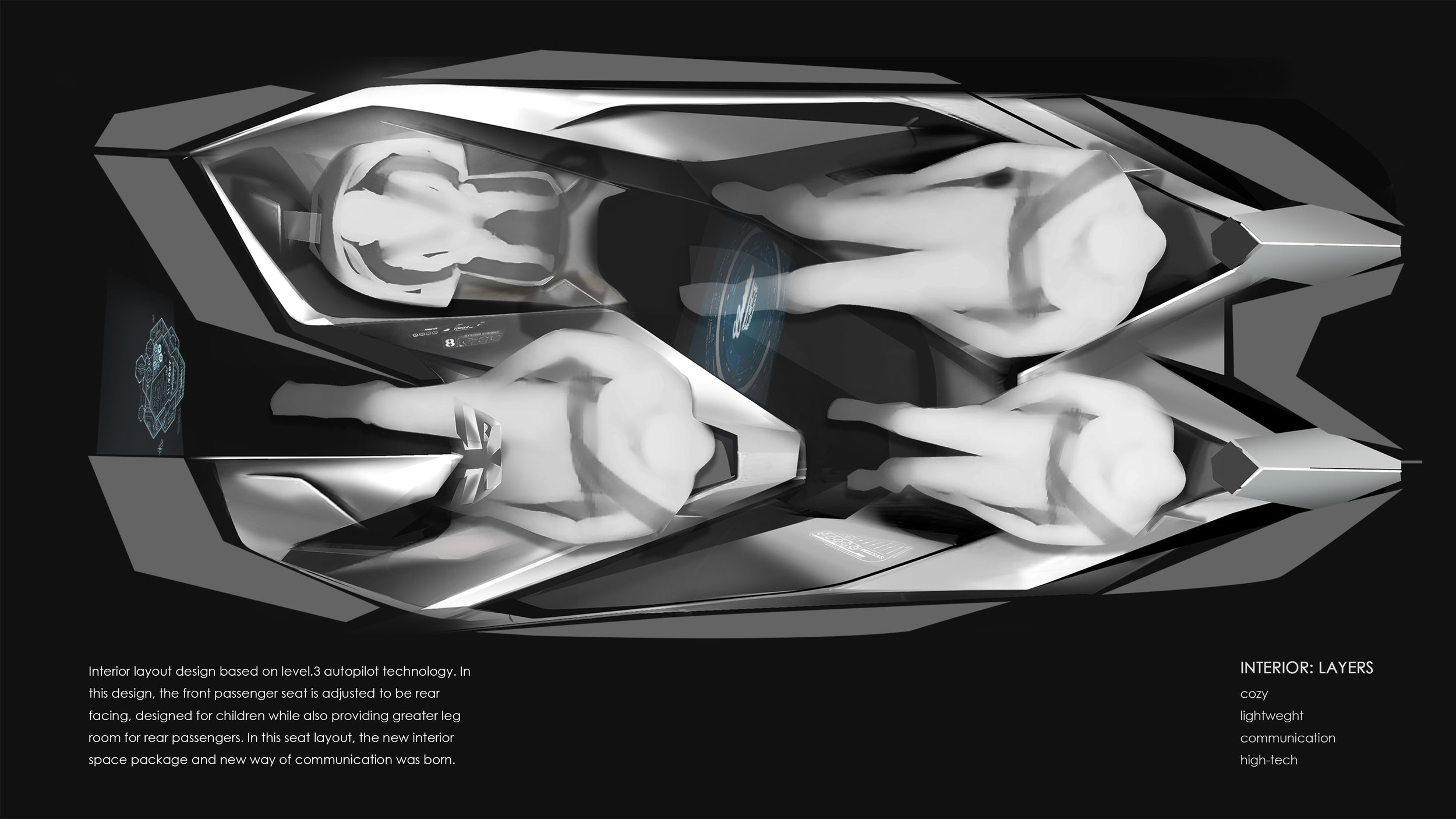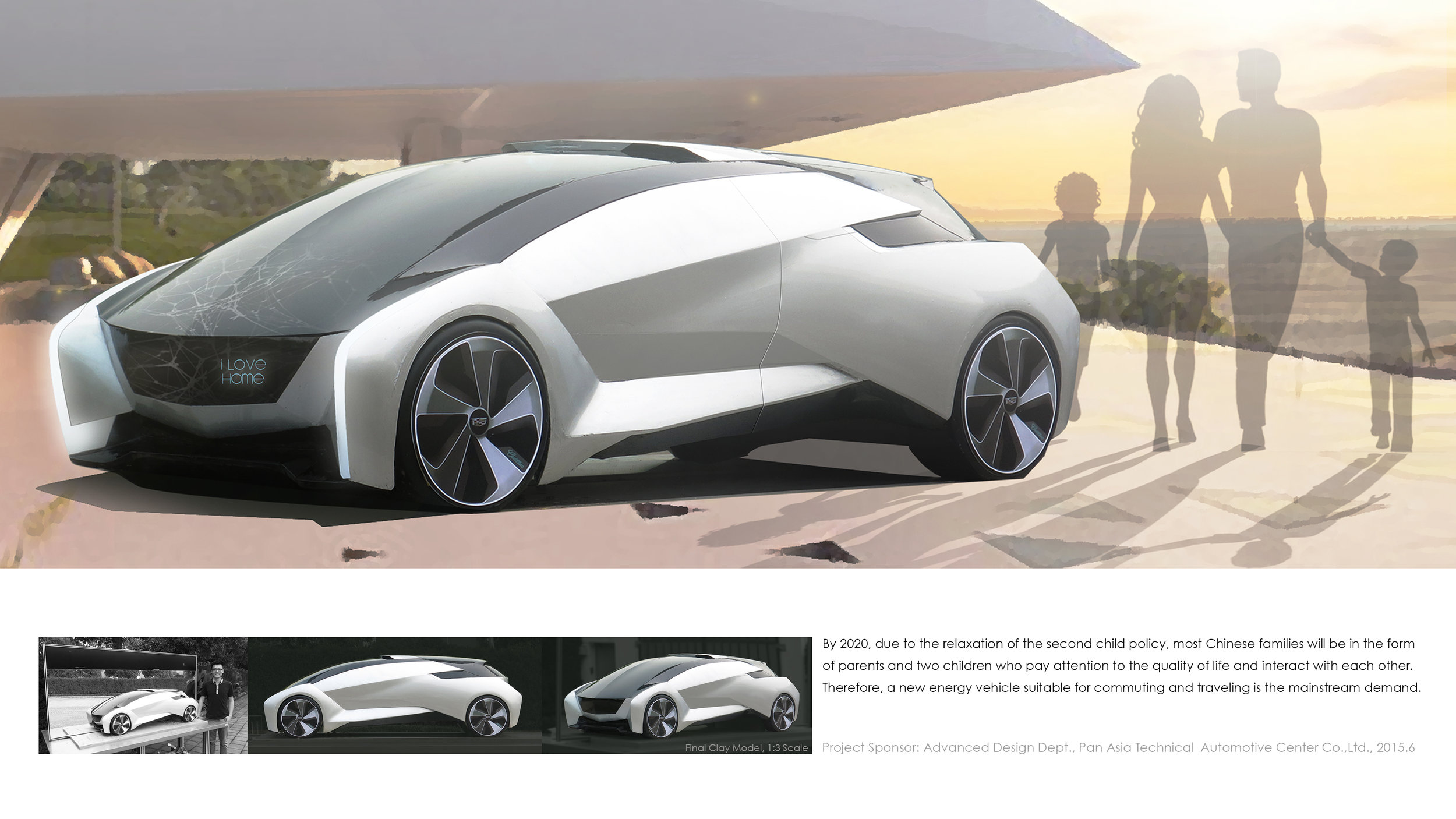Cadillac FCEV: Trend Study of New Architecture for Car Design
Tongji Univ., PATAC, 2015
#DesignStrategy #UserResearch #AutonomousVehicle #Automobitecture
Tools: Sketching, Photoshop Rendering, 1:3 Clay Model
The Evolutionary History Of Vehicle Architecture
From wagons to steam locomotives, vehicles with internal combustion engines to today’s new-energy electric vehicles, the revolution of powertrain will inevitably lead to innovations in the layout of vehicles, which affects the style of vehicles. It’s time for a revolution now.
For a fuel cell battery electric car(FCEV), the architecture will have several elements. This concept is to define a technical implementation, while avant-garde but not over-radical design. This means that it is likely to be the next generation to enter the market.
Exterior Concept
The size of the wheel is a key measure of the proportion in the side of a vehicle, the car's wheelbase, height, and overhangs have a relative relationship with wheel size. The wheel size is 800 mm in diameter, which is bigger than common in order to balance side proportion. At the same time, the width of the wheel is decreased to minimize frictional resistance for a better energy efficiency.
This mono volume vehicle has a wheelbase equals four wheels, which reaches 3.2 meter. Thanks to the fuel cell battery powertrain system, such a long wheelbase will provide more adequate interior space than ever.
The overhangs are relatively short, contributing to better controllability.
Combined with previous studies, the choice of paper-cut as an exterior styling intent, its main features are as follows:
A. Laminar material, giving a light feeling, in line with the new energy vehicles lightweight and efficient impression.
B. Clean and pure, full of sense of quality and high-technology.
C. In detail, the surface is cut to form sections and shades. The entire plane evolves into patchwork and interconnected small facets. The faceted and frontal straight lines form a variety of subtle lighting changes that are worth pondering .
Interior Concept
Interior layout design based on level.3 autopilot technology. In this design, the front passenger seat is adjusted to be rear facing, designed for children while also providing greater leg room for rear passengers. In this seat layout, the new interior space package and new way of communication was born. For interior design, I worked hard to cut on an entire plane and expand in the vertical dimension to create a seat structure. Through the study of different body orientations, a seat package was adopted. In this design, the front passenger seat is adjusted to be rear facing, designed for children while also providing greater leg room for rear passengers.
By 2020, due to the relaxation of the second child policy, most Chinese families will be in the form of parents and two children who pay attention to the quality of life and interact with each other. Therefore, a new energy vehicle suitable for commuting and traveling is the mainstream demand.
This project was selected as Excellent Graduation Design of Tongji University 2015. 1:3 clay model was sponsored by Pan Asia Technical Automotive Center.


